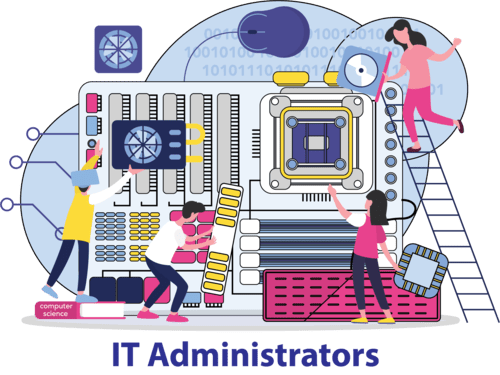Ansible Training | Learn Ansible Course Now
Introduction
Ansible allows IT teams to quickly build, deploy and manage IT applications and platforms quickly while using automation scripts in playbooks, shell scripts or Python.
Due to its flexibility, Ansible also features powerful environment setup features and application release mechanisms.
Red Hat released Ansible as an agentless process automation platform in 2012; it quickly saw popularity among software developers.

IT professionals seek an effortless process automation platform to use quickly, efficiently, and reliably with IT infrastructures and applications.
Ansible quickly rose in prominence after its debut, and it became particularly appealing due to its agentless design.
It reduced automation overhead significantly while rapidly automating IT environments and applications quickly, efficiently, and reliably.
Ansible users have taken full advantage of its open-source nature by joining and contributing to its community by exchanging ideas, methods, and best practices.
Its user base is active contributors who willingly help; their contribution includes plugins, modules, and tools designed to enhance user experiences.

IT workers looking to increase productivity, cut expenses and streamline procedures may benefit from using Ansible.
This powerful IT-management platform makes creating multi-step automation programs simple, while system administrators and developers can automate tasks rapidly using Ansible.
About Technology
IT and DevOps personnel often employ Ansible as an open-source automation platform to rapidly expedite IT infrastructure installations.
Ansible, an agentless Python and YAML configuration management tool, offers a solid yet flexible tool for configuring, maintaining, deploying and monitoring applications and infrastructures.

Declarative infrastructure management improves system consistency and dependability while eliminating time-consuming manual operations.
Deployment settings and resources are easily manageable; Ansible supports AWS, Azure, Heroku Rackspace Cloud Google Compute Engine Digital Ocean platforms.
Ansible’s native automation language, Ansible Playbooks, makes it possible to quickly develop playbooks that direct an Ansible Node and rapidly deploy environments, fix configuration issues or deploy applications and software.
Using these playbooks, you may create faster deployment environments or deploy software quickly and seamlessly.
Ansible provides configurable modules with inbuilt security measures for ease of use and an effortless connection with Puppet.
Ansible Meaning
Ansible’s straightforward automation language and preloaded modules, such as package installation and service management, assist administrators in automating IT processes quickly.
Allows system administrators to automate configuration management, software deployment and provisioning without losing control over complex tasks and remain user-friendly.

Ansible allows system administrators to automate system configuration, deployment and control, making this IT automation platform highly sought after.
IT administrators may automate systems without installing or configuring agents using its robust automation language in Yaml (YAML Markup Language).
Ideal for system admins looking for simplicity when automating IT infrastructures.
Ansible automates system setup and application installation processes on many physical and virtual production servers.

It simplifies life for IT administratorswho must manage multi-server activities more quickly and reliably.
Ansible employs declarative policies so administrators may set system states while Ansible takes care of everything else for you. It’s simple yet scalable enough for more extensive installations.
Allows developers to integrate it with configuration management systems, asset tracking services, user management apps, and more, making it ideal for DevOps and Infrastructure as Code environments.
Benefits of Ansible

Cost Reduction: By automating IT activities, Ansible helps firms save both people and software-related costs by streamlining operations.
Easy to manage:Configuration language and straightforward command line tools enable enterprises to manage complex infrastructure environments using Ansible rapidly.
Productivity: Automating laborious and time-consuming processes frees workers to focus on more essential duties.
Security: Ansible tools offer comprehensive infrastructure protection by auditing, verifying and protecting it against external and internal attacks.
Flexibility: Open-source platform may also be customised for various IT infrastructure management environments like public cloud services, on-prem data centres or containerised cloud deployments.

Ansible Training

Prerequisites of Ansible
Ansible’s prerequisites include basic system administration and Linux knowledge; familiarity with YAML, Ansible playbook markup and its usage; server and networking fundamentals; knowledge of version control systems and cloud services; proficiency in Python for programming purposes and command line knowledge, Python proficiency, Linux system administration knowledge toutilise Ansible effectively.
How can I learn Ansible?

Ansible automates complex, time-consuming operations by automatically deploying and configuring applications, databases and networks.
Grasp the fundamentals: Before diving into Ansible setups and tasks, one should understand its components and architecture; you must do that; it should be addressed before diving in headfirst.
To prepare, master Ansible fundamentals by getting familiar with its core functionality before diving deeper.
Establish your environment using a local Ansible machine and explore its settings and execution.
Use Ansible’s recommended practices: Implementing Ansible’s recommended and developer best practices is integral for successful Ansible projects.
Focusing on inventory setup, task delegation, playbooks, roles, modules, and variables to quickly understand and launch soon is crucial in getting up and running.
User Establishing web servers, user accounts and virtual machines, as examples, demonstrate this whole procedure well.
Apply Ansible to your projects: Once you understand its fundamentals, apply them in real-life challenges and projects, allowing you to internalise their instructions better.
Use the latest version: Ansible is constantly evolving, so take advantage of every upgrade by practising its most recent release; doing this helps increase understanding while learning Ansible can become fun and engaging with proper tools.
Modes of learning Ansible

Various modes for studying Ansible are suitable for different learning styles; here’s our handy list.
Self-directed learning uses books, internet resources and mentors; online tutorials often guide users through specific activities.
Live or recorded webinars usually cover one subject, while videos allow novice learners to learn from experts.
Ansible learning caters specifically to each learner’s learning style and comfort level.
Interactive classes give learners hands-on experience; these typically contain activities designed around real-world scenarios that allow learners to put their abilities to use realistically.
Read the necessary material, view Ansible video courses, articles, tutorials or ebooks and experiment with this automation tool.

Ansible Online Training

Training on Ansible
Ansible is designed to automate system administration duties, including deploying web apps and configuring software, hardware devices and their management.
Ansible tutorial begins by reviewing basic Ansible concepts and functions; training then expands onto more complex subjects like writing playbooks, developing modules from scratch, using Ansible Galaxy to install pre-made roles, playbooks etc.

Once you understand the basics, Ansible gives you all the tools to manage multiple hosts efficiently while taking advantage of its vault for secure data storage, designing custom roles and playbooks, and administering users and groups.
Ansible Tower, an enterprise-level automation and orchestration platform, may be utilisedconfidently after proper training; it enables consumers to manage their entire IT infrastructure online.
System Administrators require Ansible training to advance in their careers, and Ansible users may leverage automation features with proper practice, creating opportunities for engineers.
Job Opportunity for Ansible
Ansible presents opportunities for systems Engineers, System administrators, Cloud Architect Automation engineers, Security Engineers, and Engineering Infrastructure specialists.
CloudFoundation is an outstanding e-learning site offering Ansible instructions to newcomers and experienced Ansible practitioners; for more information about Ansible, check out this Platform.

Ansible Course Price



Srujana
Author